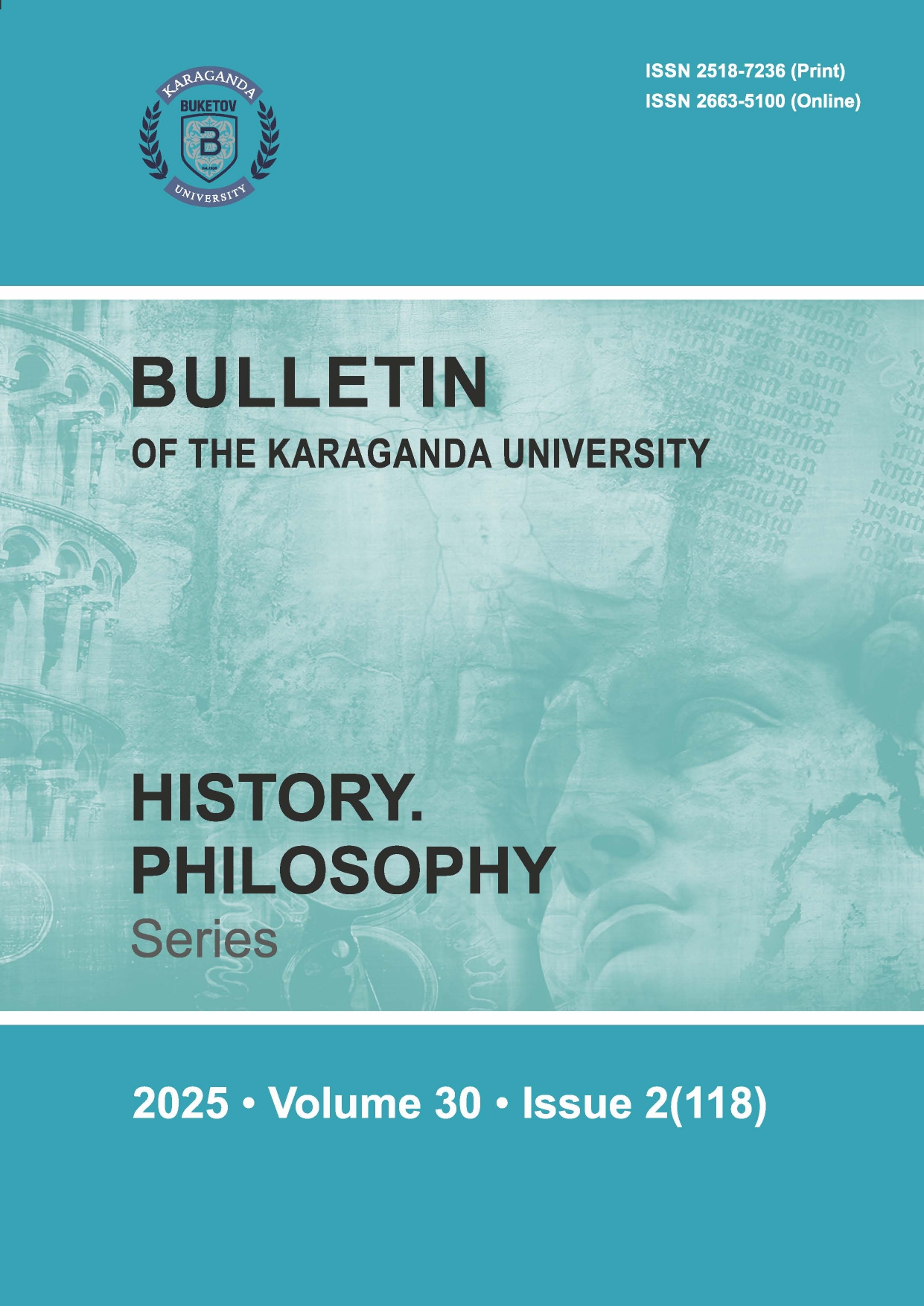The Institution of Peasant Chiefs in the Turgai Region: an Attempt to create a “Unified Authority” in the Late 19th and Early 20th Centuries
DOI:
https://doi.org/10.31489/2025hph2/195-203Keywords:
peasant chiefs, bill, administrative management, reform, Turgai region, military governor, Kazakh clans, judicial system, people’s court, zemstvo fees, treasury, settlersAbstract
At the end of XIX and beginning of XX century the socio-economic situation in the Steppe regions, including the Turgai region, changed significantly due to the increase of migrants. There was a need for changes in administrative management, which led to the introduction of the institute of peasant chiefs. At the stage of development and discussion of the draft law on peasant chiefs, the problems in the system of administrative management were exposed. In Kazakh historiography, the last imperial administrative reform in the steppe regions has not received wide coverage. The article analyzes for the first time the participation of Turgai officials in the development of the “Temporary Regulation on Peasant Chiefs.” As a result, the problems of organizing local government bodies, power relations between the center and steppe regions, and the government’s personnel policy for forming a bureaucratic apparatus are demonstrated. The reasons for the need to introduce peasant chiefs, cited by the military governor of the Turgai region, and his views on determining the functional responsibilities of the latter are presented. The position of the Turgai regional government, expressed
during the preparation of the Regulation on peasant chiefs, was also considered. In order to successfully implement reforms, they proposed to take into account the traditional tribal principles of social organization of the Kazakhs, advocated for the expansion of judicial powers of peasant chiefs and the financing of the reform to be carried out both at the expense of zemstvo expenses and the treasury.




